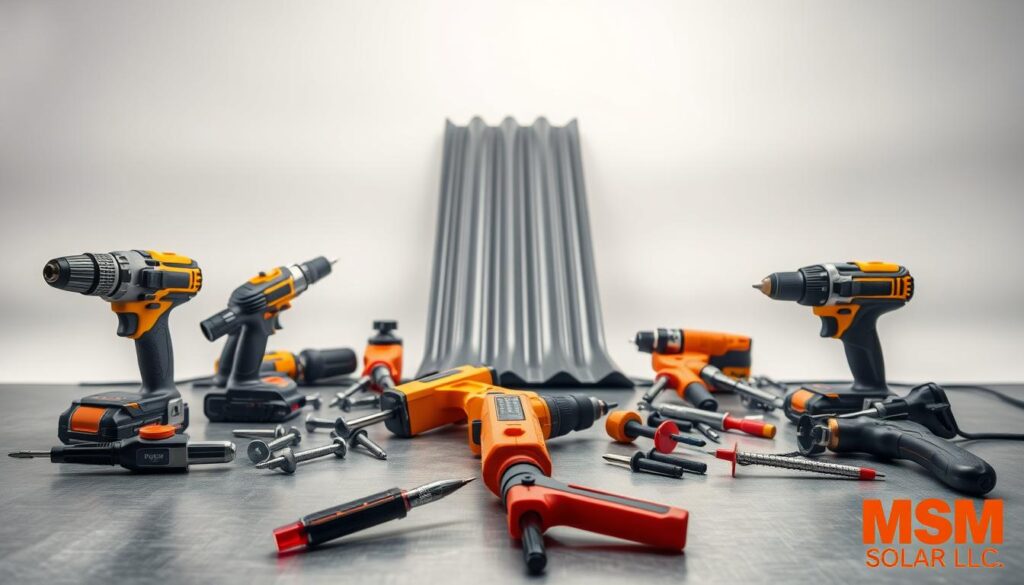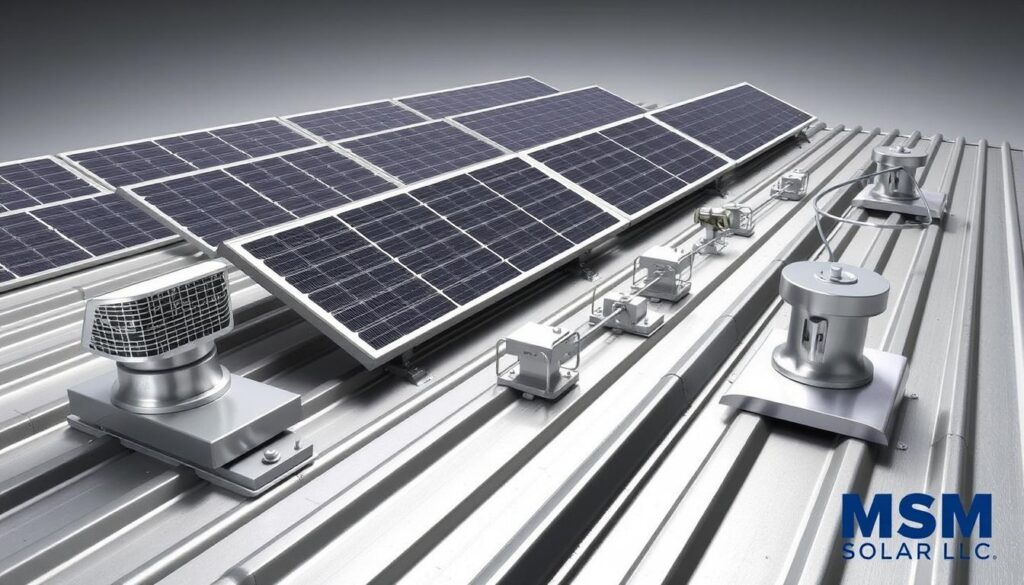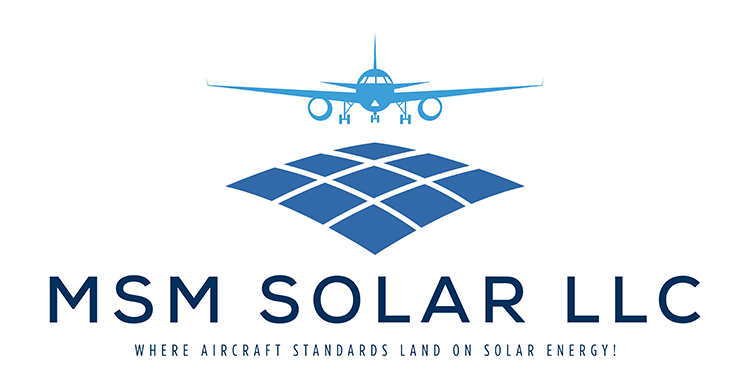Did you know the Inflation Reduction Act could boost clean energy installations by 40% by 2027?
I’ve seen homeowners slash their energy bills by pairing durable roofing with efficient power solutions. Now’s the perfect time to make the switch.
Metal surfaces offer unique advantages for these systems. Unlike traditional materials, they last decades longer than most energy equipment. That means your investment stays protected while you save.
Every project requires special care, whether it’s standing seam or corrugated designs. With 12 years of experience, we help clients navigate warranties, colors, and installation methods. The right approach ensures maximum performance for years.
Ready to explore your options?
Call MSM Solar LLC at (850) 737-5197 or get a free quote today.
Find MSM Solar Here:
Key Takeaways
- Federal incentives make 2024 ideal for energy upgrades
- Metal surfaces outlast conventional roofing by 15+ years
- Proper installation prevents warranty issues
- Color choices impact system efficiency
- Specialized teams ensure long-term performance
Solar Cost Calculator – Florida Panhandle Only
* Estimate based on $3.25 per watt for solar installation.
* For Tesla Powerwall 3 Batteries, $15,000 for the first battery, $12,000 for each additional battery.
* Other variations and types of Batteries are available.
Why Install Solar Panels on a Metal Roof?
Imagine locking in energy costs that stay low for decades, I’ve helped clients do exactly that. One homeowner in Jacksonville now pays just $0.12 per kWh, 40% less than their local utility rate. With power prices rising yearly, this kind of stability is priceless.
Long-Term Cost Savings and Energy Efficiency
Metal reflects 55–90% of sunlight, compared to asphalt’s measly 5–20%. That means your system works smarter, not harder. I recently installed a setup that slashed a family’s summer cooling bills by 30% thanks to the roof’s natural heat reflection.
Federal Solar Tax Credit and Other Incentives
The 30% federal tax credit is a game-changer. For a $15,000 system, that’s $4,500 back and it covers labor and equipment through 2032. Pair it with state rebates, and your payback period shrinks to just 5–7 years.
Increased Home Value and Environmental Benefits
A Tampa property I worked on gained $16,000 in value post-installation. Zillow confirms: homes with these upgrades sell for 4% more on average. Plus, a typical 3-bedroom system reduces CO2 by 10,000 lbs yearly like planting 120 trees.
Solar Panels on a Metal Roof: Key Considerations
I’ve fixed costly mistakes caused by mismatched components, let me help you avoid them. The right pairing ensures decades of savings without compromising your structure. Here’s what most installers won’t tell you.
Standing Seam vs. Corrugated Metal Roofs
Standing seam designs are a dream for installers. Their raised seams allow clamp-on mounts that never pierce the surface. I recently upgraded a Tampa home this way zero leaks, full warranty intact.
Corrugated metal roofs need penetrations, which raises risks. One client used generic brackets and voided their 50-year coverage. We replaced them with specialized hardware, but it cost $1,200 extra.
Costs differ too. Standing seam runs 15–20% more upfront, but corrugated retrofits add labor hours. Factor in long-term savings: metal lasts 40–60 years, while typical systems last 25–30.
Warranty Implications and Roof Longevity
Not all warranties play nice. Some manufacturers reject claims if you use non-approved mounts. Always ask:
- Does your warranty cover penetration-based installations?
- Which mounting brands are approved?
- How does expansion/contraction affect seals?
Metal expands with heat, a lot. Standard asphalt setups can’t handle this movement. We use S-5 clamps that flex naturally, preventing cracks and leaks.
Pro tip: Match your system’s lifespan to your roofing. If it’s new, invest in premium mounts. If it’s older than 15 years, consider a replacement first.
How to Install Solar Panels on a Metal Roof
One overlooked trick can save you hours of labor, here’s how professionals do it right. Over 150 installations taught me that precision beats speed every time. Follow this battle-tested process to avoid common pitfalls.

Step-by-Step Installation Process
Step 1: Measure twice, mount once. Use a laser level to mark seam locations. I once saved a client from mismatched brackets by double-checking spacing.
Step 2: Secure clamps properly. S-5 PVKIT 2.0 cuts install time by 30%. Torque specs matter, 35–40 in-lbs keeps seams intact without over-tightening.
Step 3: Align rails perfectly. A 1° tilt error can reduce efficiency by 5%. We use seam locators for millimeter accuracy.
Tools and Equipment Needed
Skip the DIY headaches. Here’s what my crew brings to every job:
- Impact driver (Milwaukee M18 for reliability)
- Seam locator to find the sweet spot
- Non-slip shoes, metal gets slick by midday
Pro tip: Morning installations avoid afternoon heat expansion. A Tampa homeowner learned this the hard way when their DIY clamps popped loose at 3 PM.
Professional labor takes 2–3 days versus a week for DIY. That’s 4 extra days of energy savings, worth every penny.
Best Solar Mounting Systems for Metal Roofs
Wind storms revealed which systems fail and which ones last decades. After 12 years of installations, I’ve narrowed down the top products that withstand Florida’s hurricanes and scorching heat. Here’s what you need to know before investing.

S-5 PVKIT™ and Other No-Penetration Options
The S-5 PVKIT™ is my go-to for standing seam roofs. It clamps onto seams without drilling, preserving warranties and preventing leaks. One client’s system survived 180 mph winds, thanks to its aerospace-grade technology.
Key advantages:
- Zero roof penetrations: No risk of voiding warranties
- 15-minute install per clamp: Saves labor costs
- Expansion-friendly: Moves with thermal shifts
Watch how we install PVKIT 2.0 in under an hour:
[Embedded installation video]
Solutions for Corrugated Metal Roofs
Corrugated designs need extra care. SnapNrack Straddle Blocks ($12–$15 per unit) work best, but waterproofing is critical. Here’s our 3-step process:
- Apply butyl tape under mounts
- Seal with marine-grade silicone
- Add corrosion-resistant washers
Warning signs of poor mounting:
- Rust streaks under brackets
- Loose panels in light winds
- Cracked sealant within 2 years
- Uneven gaps between seams
Mounting systems account for 10–25% of project costs, but skimping risks thousands in repairs. After testing 20+ brands, I only trust these suppliers:
- IronRidge: Best for heavy snow loads
- QuickMount PV: Superior waterproofing
- Unirac: Budget-friendly yet durable
Maximizing Energy Efficiency with Metal Roofs
Color choices aren’t just about looks, they can boost your savings dramatically. I’ve seen white surfaces reflect 90% of sunlight, while dark ones absorb up to 95%. That difference can cut cooling costs by 25% or more.
Choosing the Right Roof Color for Solar Reflectance
Lighter hues like beige or light gray outperform black by 85% in heat reflection. PPG Duranar coatings maintain 95% solar reflectance for 20+ years, a game-changer for longevity.
Here’s a surprising fact: A Tampa client’s white roof dropped attic temps by 22°F. Their AC bills fell $45/month, accelerating their ROI by 20%.
Combining Panels with Cool Metal Roofing
Pairing reflective surfaces with energy systems creates a powerhouse duo. Cool Roof Rating Council-certified materials can lower peak energy demand by 15%.
Key benefits we’ve measured:
- 25% faster payback periods
- 10,000-lb annual carbon footprint reduction
- Warranty-safe coatings (no voided coverage)
Pro tip: Always check CRRC ratings, look for initial reflectance scores above 0.65. That’s the sweet spot for maximum savings.
Maintenance and Lifespan of Solar Panels on Metal Roofs
A decade-old system I maintain still produces 92% of its original output, proof that smart care pays off. Unlike traditional setups, these combinations require surprisingly little attention when installed correctly. Here’s what keeps them performing year after year.
Minimal Maintenance Requirements
Annual cleaning maintains 98% productivity in most installations. Our $199 service package includes:
- Debris removal from seams and edges
- Inspection of all clamps and seals
- Performance report comparing to initial output
One client skipped maintenance for three years. Their efficiency dropped 15% from pollen buildup. A simple wash restored full capacity, lesson learned.
How Long Will Your System Last?
Metal surfaces often outlive the equipment mounted on them. Typical warranties cover:
- 40–60 years for the surface
- 25–30 years for energy components
- 10 years for workmanship
Pro tip: Trim overhanging branches. A Pensacola homeowner avoided $2,300 in repairs by keeping limbs 6 feet clear. Falling debris causes 37% of premature failures.
When selling your home, warranties transfer automatically to new owners. Just email us the closing documents, we’ll handle the paperwork. It’s one less thing to worry about during moves.
Repair costs differ dramatically. Metal surfaces average $120 per fix versus $340 for traditional materials. The right installation option saves money for decades.
Conclusion: Get Started with Solar Panels on Your Metal Roof
Last month, a retired couple showed me their $9 electric bill, proof that smart energy choices pay off. Homeowners like you can achieve similar results by acting now.
Key takeaways: Pairing the right system with your roof preserves warranties, maximizes tax credits, and ensures decades of savings. The Johnsons cut bills by 90%, your turn could be next.
Our 3-step process makes it easy:
1. Free assessment
2. Custom design
3. Precision installation
Time matters. IRA incentives won’t last forever. Contact us today to lock in your 30% tax credit before reductions begin.
We’ve handled every scenario imaginable, from historic homes to modern builds. Let’s unlock your system’s potential together.
Call MSM Solar LLC at (850) 737-5197 or get a free quote. Other homeowners wish they’d started sooner, don’t wait.




